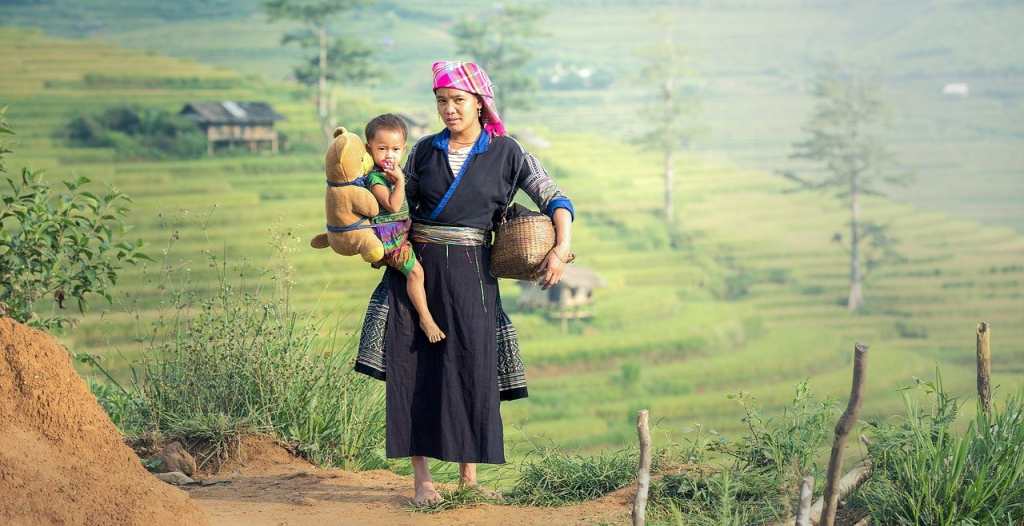Famous Tribal Groups of India: How Many Tribes are there in India?

The tribal communities in India have been recognized by the Indian Constitution under ‘Schedule 5’ of the constitution. Hence the tribes recognized by the Constitution are known as ‘Scheduled Tribes’. A tribe is a social division in a traditional society consisting of families linked by religious, social, blood ties, economic, with a common culture and dialect. Tribes are also known as ‘Adivasis’. In India, there are around 645 distinct tribes. However, in this article, we concentrate only on the famous tribal groups of India and you will also get to know how many tribes in India?
Important Tribes of India Statewise
| State | Name of important tribes of India for UPSC |
|
Andh And Sadhu Andh, Bhil, Bhaghata, Dhulia,rona, Kolam, Gond, Thoti, Goundu, Kammara, Savaras, Dabba Yerukula, Sugalis, Nakkala, Pardhan, Gadabas, Chenchus A.k.a Chenchawar, Kattunayakan, Jatapus, Manna Dhora |
| Arunachal Pradesh | Singpho, Monpa, Abor, Sherdukpen, Galo, Apatanis |
| Assam | Khasis, Chakma, Dimasa, Gangte, Garos, Hajong, Chutiya |
| Bihar | Gond, Birjia, Asur, Savar, Parhaiya, Chero, Birhor, Santhals, Baiga |
| Chhattisgarh | Nagasia, Biar, Khond, Agariya, Bhattra, Mawasi, Bhaina, |
| Goa | Varli, Dubia, Siddi, Dhodia, Naikda |
| Gujarat | Patelia, Bhil, Dhodia, Bamcha, Barda, Paradhi, Charan, Gamta |
| Himachal Pradesh | Swangal, Gujjars, Lahaulas, Khas, Pangwala, Lamba, Gaddis |
| Jammu and Kashmir | Balti, Garra, Sippi, Bakarwal, Mon, Gaddi, Purigpa, Beda |
| Jharkhand | Gonds, Birhors, Savar, Mundas, Santhals, Khaira, Bhumji |
| Karnataka | Gond, Patelia, Barda, Yerava, Bhil, Koraga, Adiyan, Iruliga, |
| Kerala | Malai, Aarayan, Arandan, Uralis, Kurumbas, Arandan, Eranvallan |
| Madhya Pradesh | Kharia, Bhils, Murias, Birhors, Baigas, Katkari, Kol, Bharia, Khond, Gonds, |
| Maharashtra | Warlis, Khond, Bhaina, Katkari, Bhunjia, Rathawa, Dhodia. |
| Manipur | Thadou, Aimol, Maram, Paite, Chiru, Purum, Kuki, Monsang, Angami |
| Meghalaya | Pawai, Chakma, Raba, Hajong, Lakher, Garos, Jaintias Khasis |
| Mizoram | Dimasa, Raba, Chakma, Lakher, Khasi, Synteng, Kuki, Pawai. |
| Nagaland | Nagas, Angami, Sema, Garo, Kuki, Kachari, Mikir |
| Odisha | Gadaba, Ghara, Kharia, Khond, Matya, Oraons, Rajuar, Santhals. |
| Rajasthan | Bhils, Damaria, Dhanka, Meenas(Minas), Patelia, Sahariya. |
| Sikkim | Bhutia, Khas, Lepchas. |
| Tamil Nadu | Adiyan, Aranadan, Eravallan, Irular, Kadar, Kanikar, Kotas, Todas. |
| Telangana | Chenchus. |
| Tripura | Bhil, Bhutia, Chaimal, Chakma, Halam, Khasia, Lushai, Mizel, Namte. |
| Uttarakhand | Bhotias, Buksa, Jannsari, Khas, Raji, Tharu. |
| Uttar Pradesh | Bhotia, Buksa, Jaunsari, Kol, Raji, Tharu. |
| West Bengal | Asur, Khond, Hajong, Ho, Parhaiya, Rabha, Santhals, Savar. |
| Andaman and Nicobar | Oraons, Onges, Sentinelese, Shompens. |
| Little Andaman | Jarawa |
| North-East | Abhors, Chang, Galaong, Mishimi, Singpho, Wancho. |
How Many Tribes are there in India?
At present, around 461 tribal groups are found in the country, 24 groups out of those constitute Scheduled tribes.
According to the Population Census of India, 2011, the people from Schedule tribe constituted around 8.6 percent of India’s population and distributed all across the country with the highest population living in the Indian state of Mizoram (94.5 percent) and minimum in the state of Goa (0.04 percent). Let us talk about the famous tribal groups in India. Check out the list of major tribes in India.
Also Read: Ancient Indian History Previous Years’ Questions in UPSC Prelims
The Gonds
In Central India in the Chhindwara district of Madhya Pradesh, the Gond tribes who are known for their valour are mostly found. These are one of the most important tribes of India state-wise and country-wise. The Bastar district of Chhattisgarh, parts of Andhra Pradesh, Maharashtra and Orissa are also spotted for their existence. The unique lifestyle of the Gonds can be seen in all these places.
The Bhils
The lifestyle of the Bhil tribes is an absolute contrast to the massive forts and palaces to Jain temples that makes up the royal Rajasthan. The community can be found in some places of Dungarpur and Banswara districts of Rajasthan and also in the Aravali Ranges of Sirohi in Udaipur. This famous tribal group can also be spotted in Madhya Pradesh, Tripura, Maharashtra and Gujarat.
The cultural activities such as Ghoomar dance performed by this tribe in the Baneshwar Fair which takes place in January or February is a major attraction. Whereas the Bhili language, which is an Indo – Aryan language, is one of the most interesting features to experience that makes this tribe stand out among the different tribes in India.
The Santhals
The major tribes of West Bengal, the Santhal tribes are mostly found in Purulia and Bankura districts other than the parts of Bihar, Odisha, Assam and Jharkhand.
Largely dependent on agriculture and livestock, the Santhals are also well versed in hunting. The Santhali dance and music is one of the major attractions of this tribe that ensures its reputation and status as one of the important features of India for UPSC or otherwise.
Famous festivals of the Santhal group are fascinated by travellers. Some of their famous festivals are Karam, Baba Bonga, Maghe, Sahrai, Disum Sendra, Ero, Asaria and Namah.
Great Andamanese Tribes
The first inhabitants of the islands are said to be the great Andamanese Tribe which also includes the Jangil, Jarawa, Onge, and Sentinelese. Presently, a huge number is on the way of extinction and the left part of the population is greatly dependant on the campaign by Survival and Indian organizations.
Strait Island and parts of Rutland Island are the places where these great Andamanese are mostly spotted.
The Angami Naga
The famous Hornbill Festival of the Angami Naga tribes in the farthest corner of North East India, Nagaland is one of the most important pieces of Tribal Culture still existing. Majorly spotted in the district of Kohima, the Angami Nagas are one of the major tribes of Nagaland.
This tribe is famous for its woodcraft, artwork and the Hornbill festival. The Angami Nagas are famous for their stunning cane furniture, bamboo work, powerful machetes and wonderful shawls.
The languages of this group are identified with different names such as Tsoghami, Ngami, Gnamei and Monr. Further, their dressing style – men in white Mhoushu and black Lohe and women in Mechala along with ornaments like Beads, miniature mask pendants, bangles, and bracelets is distinctive.
Conclusion
Hopefully, this article will help you know about the important tribes of India for UPSC and that will eventually make you prepared well for the upcoming CSE. If you want to prepare even better for the examination, check the offered courses by the most amazing online UPSC coaching.
Also Read: What to Study for IAS UPSC? Complete Preparation Guide for UPSC Civil Service Exam







Thank you for every other informative blog. The place else could I am getting that type of information written in such an ideal means? I’ve a mission that I am just now operating on, and I have been on the glance out for such info.
Hey folks, I found your site and I to appoint its a wonderful source around here and We want to say its a great website fellows are great. Please continue the wonderful job.
I truly do love engaging with your business. Your internet layout is incredibly easy about the eye. You have a very good great spot for their shop. I actually enjoyed navigating together with ordering out of your site.
Have you noticed the news has changed its approach recently? What once seemed like a never discussed issue has become more prevelant. Its that time to chagnge our stance on this though.
Sztuka zycia – to cieszyc sie malym szczesciem.
Excellent blog here! Also your website loads up fast! What web host are you using? Can I get your affiliate link to your host? I wish my web site loaded up as quickly as yours lol
Cieszę się z jego sukcesów, każdy jest okupiony potężną pracą, sercem i wysiłkiem. Na drodze chwały i sławy zachowaj incognito.